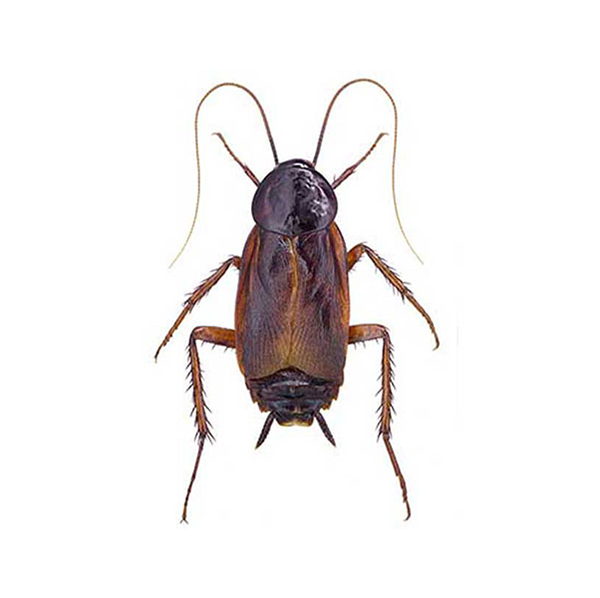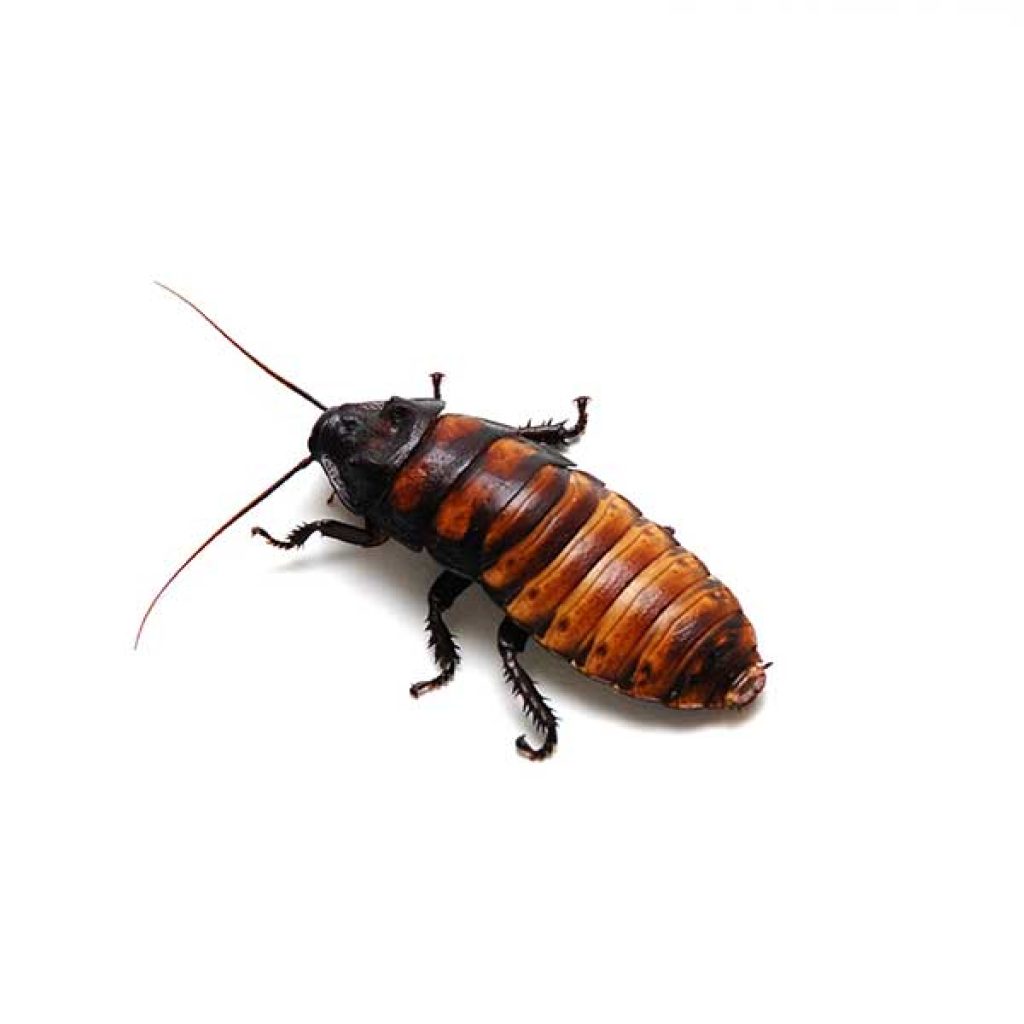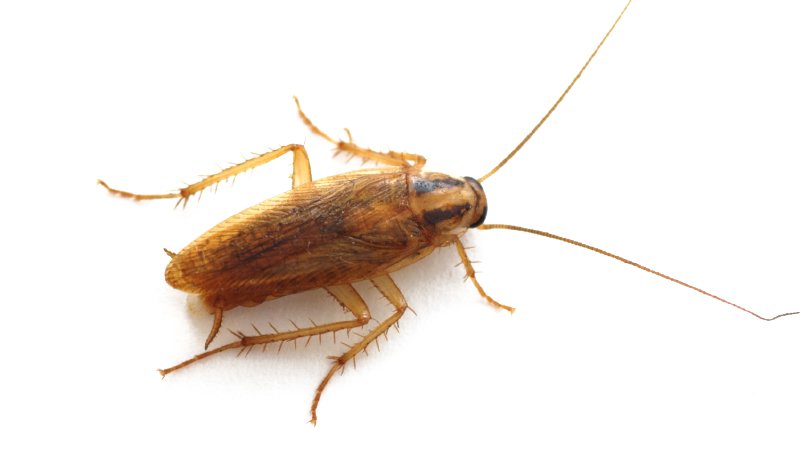Cockroaches are reviled pests for good reason. They’ve been our uninvited roommates for thousands of years, thriving in our homes, sewers, and businesses. Fortunately for us, only about 30 of the 4,600 species of roach are specially adapted to living in human habitats. And here in the Natural State, if you find a roach scurrying across the floor, it’s likely to be one of four culprits.
When our technicians begin to treat a home or business for cockroaches, identifying the type of roach is critical to creating a treatment plan. Though all domestic roaches are scavengers, their behaviors for breeding, feeding, and housing can differ greatly. This variance in behavior means that no two treatments are the same. We rely on our technicians to scope out the infestation and find the best plan of attack. Knowing the specific type of cockroach is the first step to getting rid of the problem.
Perp #1: The Oriental Roach

Dark, shiny, and stinky, the Oriental Roach is one guest you don’t want at your dinner parties. Oriental Roaches usually live outdoors, but they love humid, warm environments with a water source. If you’re thinking that environment sounds like your bathroom after a hot shower, you’re thinking like a Natural State Pest Technician. When Oriental roaches are found in a home, they’ve likely come in from two ways: either from piles of leaves up against the foundation, or through the plumbing. This is why we advise residents of Arkansas to always clear away any brush or piles of leaves from up against their homes or businesses—you never know how fast a family of Oriental roaches can move in! They may be able to survive in piles of damp leaves in the woods, but they’d much prefer to live inside the safety of your home.
Fun Fact: You may have heard that it’s possible to smell roaches. It’s true! Almost all roaches emit some kind of smell perceptible to humans, but Oriental roaches are especially smelly. They’re the cockroach equivalent of someone wearing too much cologne: they can sometimes be smelled before they’re seen.
Our technicians easily identify the Oriental Roach—they’re pretty unique looking! These roaches are some of the darkest that appear in Arkansas. They are very dark brown in color, but in certain light they can appear completely black. The males are between 0.5 inches to 1 inch long, but the females are darker and can get up to 1.5 inches long. Though neither the males nor females can fly, they both have wings. The wings on males are longer, like a cape, and those of the female are shorter, like a cowl. The nymphs are a warm orange color, much brighter than the adults. This is why some people with Oriental roach infestations mistakenly believe they have multiple species of roach in their home. It’s not another species, just multiple generations of the same colony. (We understand if that doesn’t make people feel better about it, though.)
Perp #2: Brown Banded Cockroach

If they’re tiny, dressed like a French mime, and hanging out in your favorite armchair, you might have a Brown Banded Cockroach problem. This small species of roach can be found throughout the American South, including Arkansas. Unlike Oriental and German cockroaches, Brown Banded Cockroaches don’t need a lot of water—but they do like warmth. In the wintertime, they’d love to be cozier than bugs in your living room rug. In fact, the most common way these cockroaches come into homes is by hitching a ride on secondhand furniture, similar to bedbugs.
Fun Fact: Brown Banded Cockroaches are one of the most specially evolved roaches for human habitation. They’re what we call “obligatory domestic” pests, meaning they cannot survive in the wild. They enjoy temperatures above 77 degrees Fahrenheit, which means they love the weather in Arkansas, and they like the warm vents in your house even better.
For our techs, identifying the Brown Banded Roach is no problem. After all, they’re the only roach species in Arkansas that wears stripes! Brown Banded Roaches are easily differentiated from other species by the beige horizontal bands that run above their abdomens. In addition to their fashion choices, these roaches are pretty tiny, with adults only reaching lengths of about 0.5 inches long. Brown banded roaches, unlike their German and Oriental cousins, aren’t as dependent on a water source, which means the center of the infestation could be anywhere in the home. We know to look for these guys in their favorite hiding spots—underneath furniture, behind picture frames, and even inside electronics. They like our home devices so much that one of their nicknames is the “TV Roach”! Don’t worry, though, trained technicians know how to get these couch potatoes out of your home.
Perp #3: The American Roach

They’re big, they’re bad, and they’re extremely dominant—it’s the aptly named American Cockroach. The American Roach is one of the most successful species on the planet, found on 6 of the 7 continents. Though they originally hail from the Middle East and northern Africa, they love the climate in the American South, including Arkansas.
Fun Fact: The American Roach is the Olympic track star of domestic roaches. They have been clocked in at over 3.4 miles per hour. If that speed doesn’t sound impressive, consider that a human running the same relative speed would be moving at 210 miles per hour!
If you close your eyes and picture a cockroach (not recommended), it’s very likely that your mental image of a roach is an American roach. The body is generally dark amber in color and yellow towards the tail end. They average about 1.5 inches in length, but specimens have been measured at lengths longer than 2 inches. They are the largest domestic roach found in Arkansas and are capable of surviving in the wild, but they love a human home where their natural predators are limited. They prefer warm, dank environments– like your crawl space and basement. Fortunately, American Roaches can be controlled with most professional insecticides.
Perp #4: The German Roach

We’ve saved the worst for last. The German Cockroach is one of the most common roach species found in Arkansas, and it’s the roach our pest technicians spend the most time dealing with. They are even more attracted to water than the other species found in Arkansas, and their first site of infestation is almost always the plumbing. When we hear that a roach infestation was first noticed under the kitchen sink or behind the dishwasher, we know it’s more than likely German Roaches.
German Roaches are especially small, with the adults only reaching 0.5 inches in length. This makes them great at hiding, and their light tan coloration means that they blend into most corners. Even in homes kept very clean, it’s possible for these hide-and-seek champions to reach serious population levels before anyone notices them.
Fun Fact: Of all the roach species in Arkansas, German roaches are the hardest to eliminate due to their rapid reproduction. Their nymphal period—the time from hatching to adulthood—can be under 60 days, nearly twice as fast as American and Oriental roaches. Because of this, infestations grow quickly, and technicians must structure treatments over several weeks to target all life stages of the colony.
Another frustrating trait of the German Roach is their incredible adaptability to pesticides. Their extremely long genome and rapid reproductive rate means that the species is capable of evolving faster than our development of new pesticides. German Roach populations started showing immunity to commonly used pesticides back in the 1950s. This means a skilled technician must make a strategic plan in order to treat an infestation, switching up their tactics and products in order to successfully eliminate the problem.

